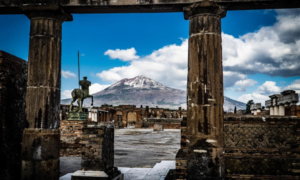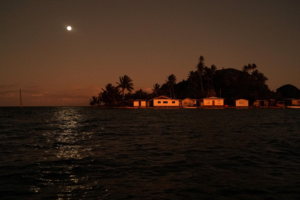Crews have been blasting the hillside at Organ Pipe Cactus National Monument in Arizona for sections of the federal government’s barrier.
By Erik Ortiz
Red-lettered signs warning of “BLASTING” began appearing over the past week at Organ Pipe Cactus National Monument, a remote desert region in southwestern Arizona bordered by Mexico to the south and a Native American reservation to the east.
Crews have been blasting the hillside while excavators and backhoes clear a path for the towering sections of border wall fast-tracked by the Trump administration — a pace that has environmental groups worried that sacred burial sites and ancestral lands are at risk of being irreversibly harmed.

BLAST WARNING SIGNALS sign & dead saguaros at Organ Pipe as the Trump administration blows up a sacred mountain for the #BorderWall.2919:17 PM – Feb 11, 2020Twitter Ads info and privacy393 people are talking about this
Since 1976, the 516-square-mile park — home to more than two dozen unique species of cactus and countless varieties of wildlife — has been recognized as a UNESCO ecological preserve worth conserving.
“This is a new low even for the Trump administration,” said Laiken Jordahl, a borderlands campaigner for the nonprofit Center for Biological Diversity in Arizona who has been documenting the altered landscape.
“They’re moving forward with complete disregard of sacred sites and indigenous sovereignty,” Jordahl said Wednesday.
The controlled blasting, which has taken place in a section of the park known as Monument Hill, is expected to continue intermittently through the end of February, U.S. Customs and Border Protection said in a statement. The agency added that it will “continue to have an environmental monitor present during these activities as well as on-going clearing activities.”
With this latest spurt in construction, Jordahl and others say they’re concerned by how the federal government has gone about building the wall — without any consultation with the Tohono O’odham Nation, a federally recognized tribe that has land and members on both sides of the U.S.-Mexico border.
The Trump administration has used federal waivers, including bypassing the Native American Graves Protection and Repatriation Act, to push the project ahead.
Jordahl said that despite lawsuits to halt the actions, the process involving Organ Pipe Cactus National Monument has been made easier precisely because the area is federally controlled land.
“It’s such a sensitive area environmentally, and it’s heartbreaking to see that what’s happening is because the government controls it because it’s so fragile,” he said. “It’s become a true desecration of indigenous land.”
Since August, crews have been replacing fencing with a steel bollard wall design.
Rep. Raúl Grijalva, D-Ariz., whose district includes the tribe’s reservation, toured the area last month and highlighted in a video tweeted Sunday that Monument Hill is a resting place for Apache warriors who once did battle with members of the Tohono O’odham Nation. In addition, activists have shared images on social media of ancient saguaro cacti, many hundreds of years old, either sawed in half or flattened.

Photos from yesterday of #BorderWall construction in Organ Pipe Cactus NM and the heartbreaking graveyard that’s being left in its tracks. New 30ft wall now stretches almost completely from the base of Monument Hill to just 9 miles east of Quitobaquito Springs..
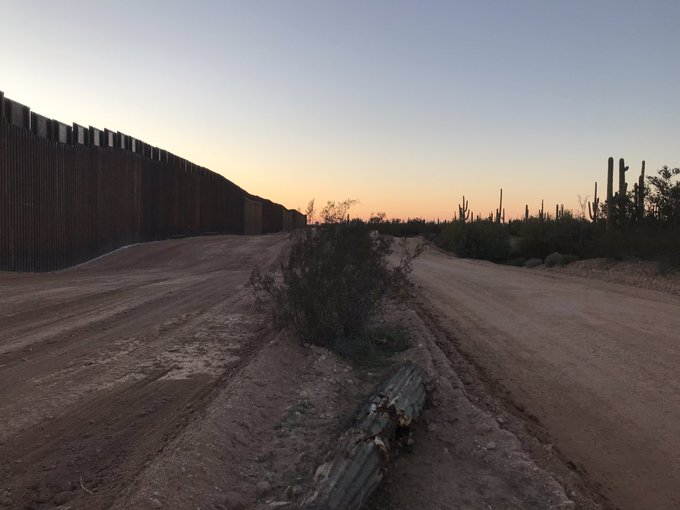
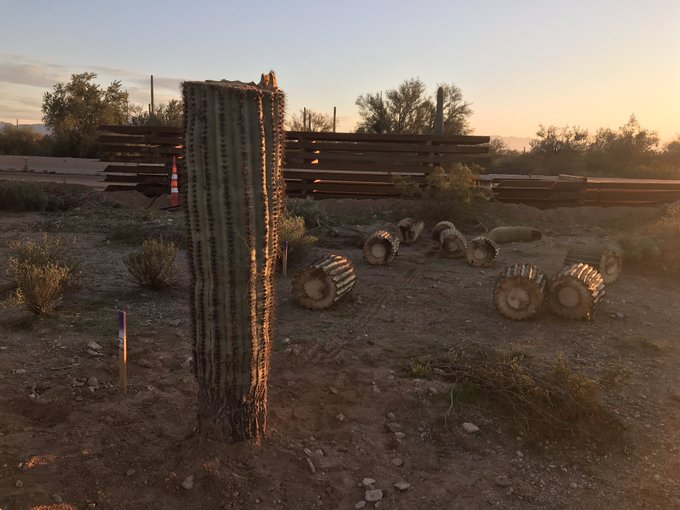
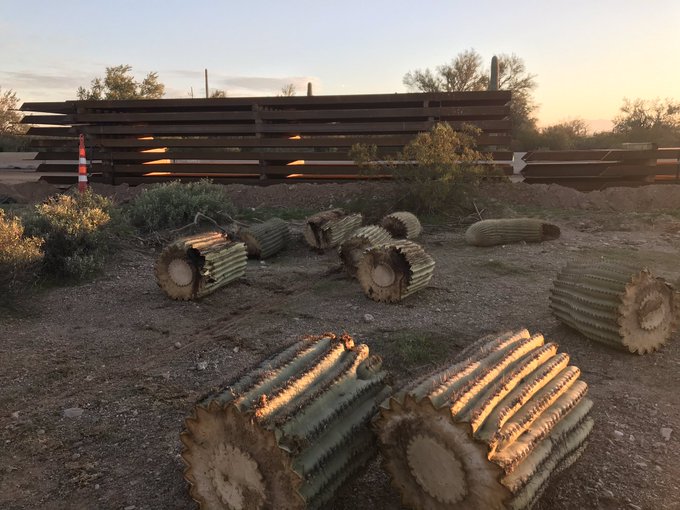
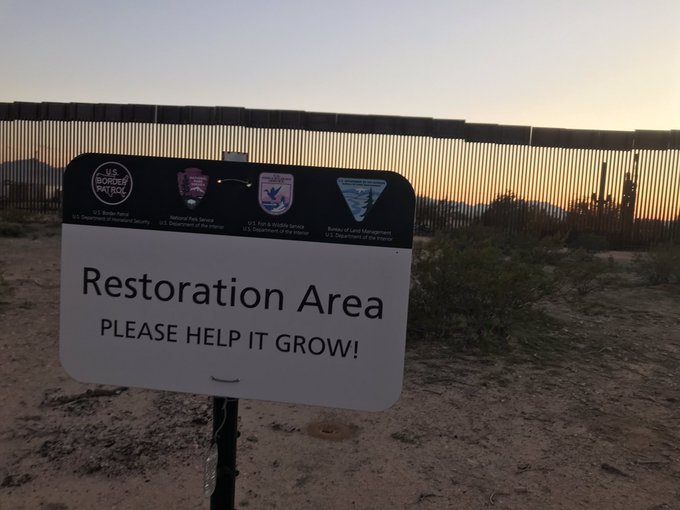
999:15 PM – Jan 17, 2020Twitter Ads info and privacy144 people are talking about this
Bulldozing is also occurring at the park’s Quitobaquito Springs, a natural source of water for the tribe near where artifacts and human bone fragments have been found, Grijalva said.
“The Trump Administration is bulldozing through sacred sites to act on a campaign talking point, no matter the cost to the people of Southern Arizona,” he told NBC News in a statement. “This destruction of the cultural heritage of the Tohono O’odham people for the purpose of building a monument to his racist policies is irreparable.”
DONALD TRUMPTrump declines to rule out pardon for Roger Stone
Grijalva said he is working with the Tohono O’odham Nation to demand that the Department of Homeland Security “stop this assault on sacred sites.”
The agency did not immediately respond to a request for comment.
The federal waivers it requested last year were vague in describing the locations for the border wall project and how many miles were needed, according to The Associated Press, although the Center for Biological Diversity estimated that the plans include 100 miles in Arizona and California along the southern border.
The wall’s construction has become a central theme of President Donald Trump’s immigration policy. During his State of the Union speech last week, he said more than 500 miles of barriers would be up by early next year.

His pledge hasn’t come without a fight from property ownersopposed to surrendering their lands to the federal government.
Last fall, the administration began a new approach — preparing to go through federal courts for permission to take over private lands. The move followed Trump’s declaration a year ago of a national emergency along the border, a controversial executive action to free up billions of dollars to fund new border wall projects.
Organ Pipe Cactus National Monument, which borders Mexico for 30 miles, is among the places that have come under scrutiny.
The park was once considered one of the most dangerous in the U.S., favored by drug smugglers, officials said. In 2002, a park ranger was fatally shot while trying to apprehend two people who were crossing illegally. But with the number of illegal crossings down in recent years, a part of the park that was once closed to the public was reopened in 2015.
The Tohono O’odham Nation says it is troubled over the future of other sacred sites along the border, including at Las Playas, where a roadway could be built near known ancestral burial grounds harboring artifacts dating back 10,000 years.
Ned Norris Jr., the chairman of the Tohono O’odham Nation, told The Arizona Republic of Phoenix in January that he wants “buffer zones” around those sensitive areas.
“How would you feel if someone brought a bulldozer to your family graveyard and started uprooting the graves there?” he asked. “That is the relationship, the significance, that is the impact that we see happening here in that way.”

Erik Ortiz is a staff writer for NBC News focusing on racial injustice and social inequality.


